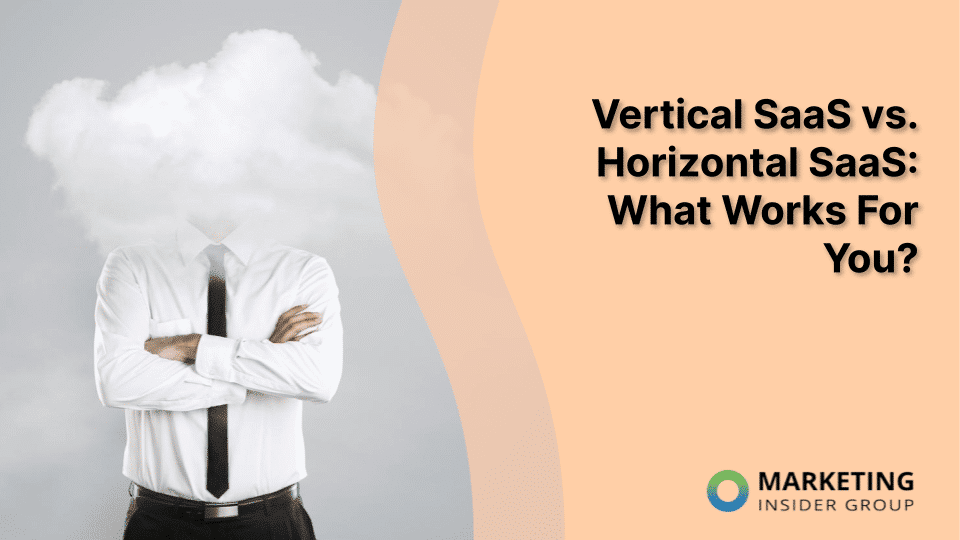
Vertical SaaS Vs. Horizontal SaaS: What Works for You?
Let’s face it: nothing is ever one-size-fits-all.
Your favorite coffee order? Definitely not the same as your coworker’s triple-shot, half-caff, oat milk latte with a dash of cinnamon.
Your ideal weekend plans? Probably not the same as your friend who loves skydiving.
And when it comes to choosing the right software for your business? You guessed it–not one-size-fits-all, either.
In the world of Software as a Service (SaaS), there are two main types you’ve probably heard of: Vertical SaaS and Horizontal SaaS. But what are they? And more importantly, how do you know which one is the right fit for your business?
We’re here to help. Dive into the nitty-gritty of Vertical SaaS vs. Horizontal SaaS, and learn what these terms mean, explore their differences, and figure out which one is the best fit for your business and its growth.
Quick Takeaways
- SaaS is a method of delivering software over the internet, offering convenience, cost-effectiveness, and minimal maintenance
- The number of SaaS applications used by businesses has grown by 68% over the past 4 years
- 94% of businesses see SaaS integration as critical to overall success
- Vertical SaaS is software designed for a specific industry or market, offering deep understanding of industry-specific workflows and challenges
- Horizontal SaaS is designed to be used across a variety of industries, focusing on solving common problems that many businesses face
- Vertical SaaS vs. Horizontal SaaS depends on market focus, customization and integration, pricing, growth and expansion opportunities, implementation and adoption, user experience, and scalability
What’s SaaS, Anyway?
The number of SaaS applications used by businesses has grown by 68% over the past 4 years alone. And now, the average company is using 1,295 cloud applications. But what even are SaaS applications? And why are so many organizations using them?
SaaS stands for Software as a Service. It’s a way of delivering software that’s a bit different from the old school method. No need to buy a CD-ROM, install a program on your computer, and then run it. With SaaS, you access the software over the internet, usually through your web browser.
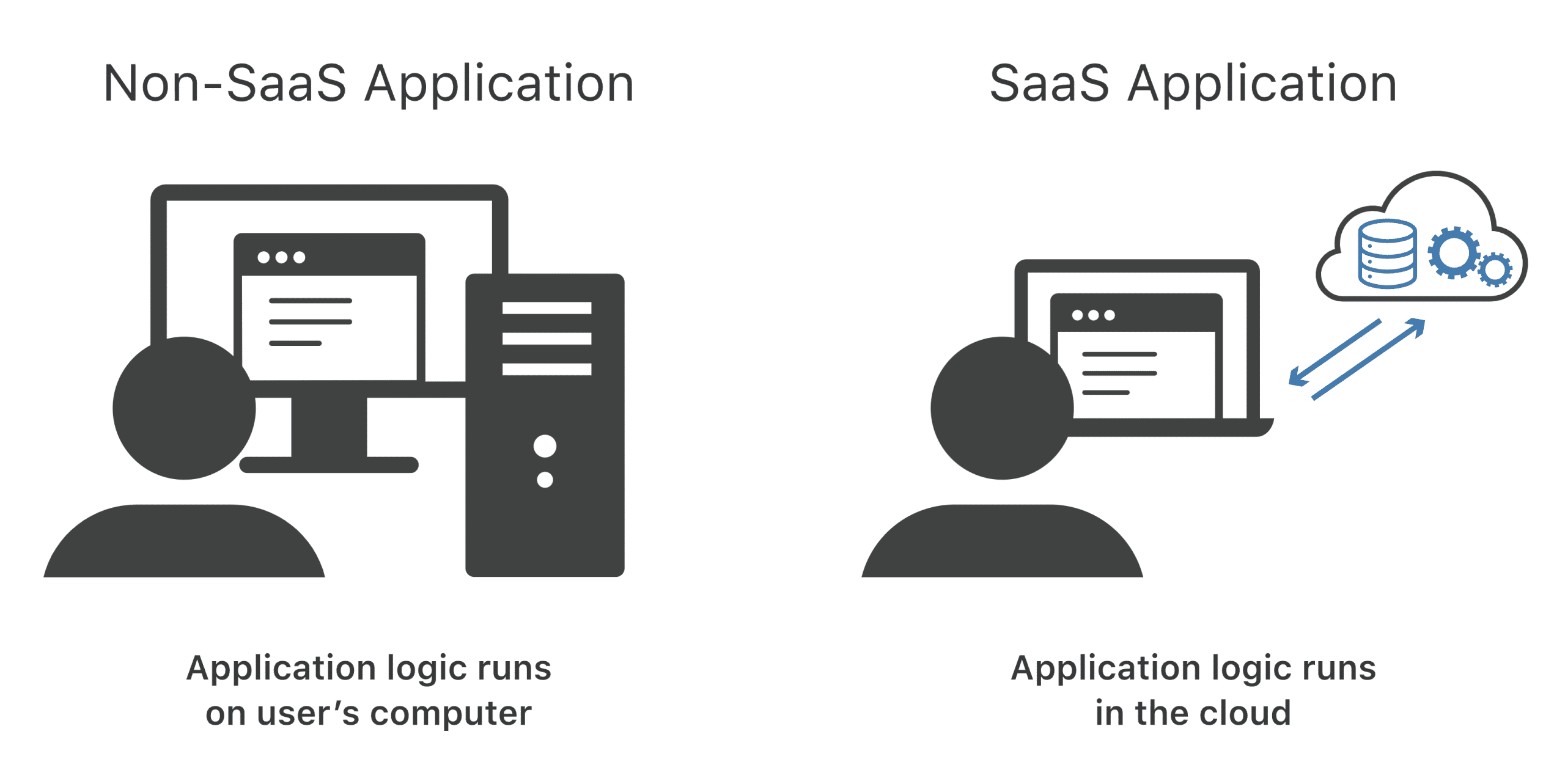
Image Source: CloudFlare
This is a big deal for a few reasons:
- Convenience. You don’t have to worry about keeping track of physical software or making sure your computer has enough storage space. You just need an internet connection, and you’re good to go.
- Cost-effectiveness. Instead of shelling out a big chunk of change upfront to buy the software, you typically pay a monthly or yearly subscription fee. This can make high-quality software more accessible for businesses of all sizes.
- Minimal maintenance. SaaS providers usually handle all the technical stuff like updates and security. This means you can focus on using the software to help your business thrive, rather than getting bogged down by maintenance.
SaaS makes software more accessible, affordable, and user-friendly. It can also give businesses a competitive edge with rapid scaling, easy collaboration, and seamless integration with other systems. So much so that on average, SaaS applications make up 70% of total company software use.
Looking to learn more about SaaS? Watch the video below.
Video Source: Dan Martell
Vertical SaaS
When we talk about Vertical SaaS, we’re talking about software that’s designed for a specific industry or market. It’s perfectly fitted to meet the unique needs of a particular business sector.
For example, let’s say you run a dental practice. You need to manage patient records, appointments, billing, and so on. A general-purpose software might be able to handle some of this, but it’s not going to be a perfect fit. Vertical SaaS, however, is designed to handle the specific challenges and requirements of running a dental practice.
The beauty of Vertical SaaS is that it speaks your language. It understands your:
- Workflows
- Compliance requirements
- Day-to-day challenges
However, Vertical SaaS can be more expensive than its counterparts, and it may not offer as many features. But for businesses in specific industries, the benefits often outweigh the drawbacks.
Horizontal SaaS
Horizontal SaaS is software that’s designed to be used across a variety of industries. It’s not specialized for any one type of business or sector. Instead, it focuses on solving common problems that many businesses face, regardless of their industry.
Think about tasks like:
- Email management
- Customer relationship management
- Accounting
- Sales automation
Horizontal SaaS provides software solutions that can help any business streamline these kinds of tasks.
One of the biggest advantages of Horizontal SaaS is its broad applicability. It’s versatile, practical, and can work for just about any business. And, since these solutions are also designed for a wide audience, they often come with a ton of features and integrations.
The only real downside to Horizontal SaaS is that it may not have the same depth of features for specific industries as Vertical SaaS. It’s a bit of a trade-off, but for many businesses, the versatility and breadth of Horizontal SaaS make it a winning choice.
Vertical SaaS vs. Horizontal SaaS: 7 Key Differences
What happens when we put Vertical SaaS vs. Horizontal SaaS head-to-head? Let’s break it down with these 7 key differences:
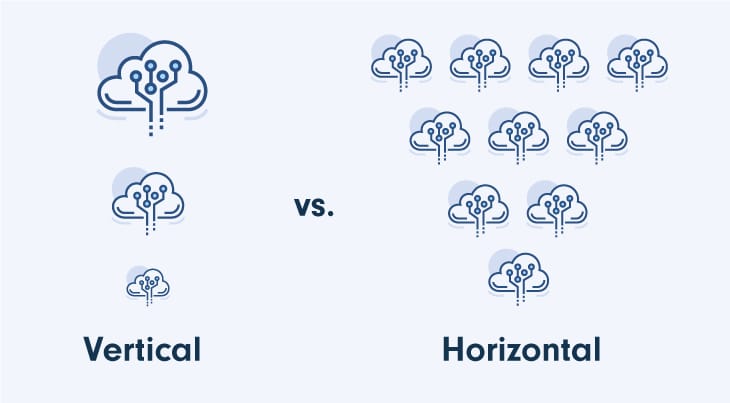
Image Source: Pay Pro Global
1. Market Focus
Market focus is pretty important when we’re comparing Vertical SaaS vs. Horizontal SaaS.
Remember, Vertical SaaS is designed with depth, diving deep into the needs and challenges of a particular market. If you’re in healthcare, education, or manufacturing, for example, there’s likely a Vertical SaaS solution out there that’s been designed with your industry in mind.
On the other hand, Horizontal SaaS is designed to be used by a wide range of industries. It focuses on breadth, tackling common tasks that all businesses deal with, regardless of their industry. Whether you’re running a tech startup, a retail store, or a non-profit organization, Horizontal SaaS has got you covered.
So, when we talk about market focus, we’re really talking about who the software is built for. Is it built for a specific industry, like Vertical SaaS? Or is it built for a wide range of industries, like Horizontal SaaS? Understanding this can help you choose the right SaaS solution for your needs.
2. Customization and Integration
A recent survey found that 94% of businesses see SaaS integration as crucial to overall success. When it comes to customization and integration, both Vertical and Horizontal SaaS can work, but they offer different levels of flexibility.
Since Vertical SaaS is designed for specific markets, it should fit like a glove right off the bat. And, they should integrate seamlessly with other tools used in your industry.
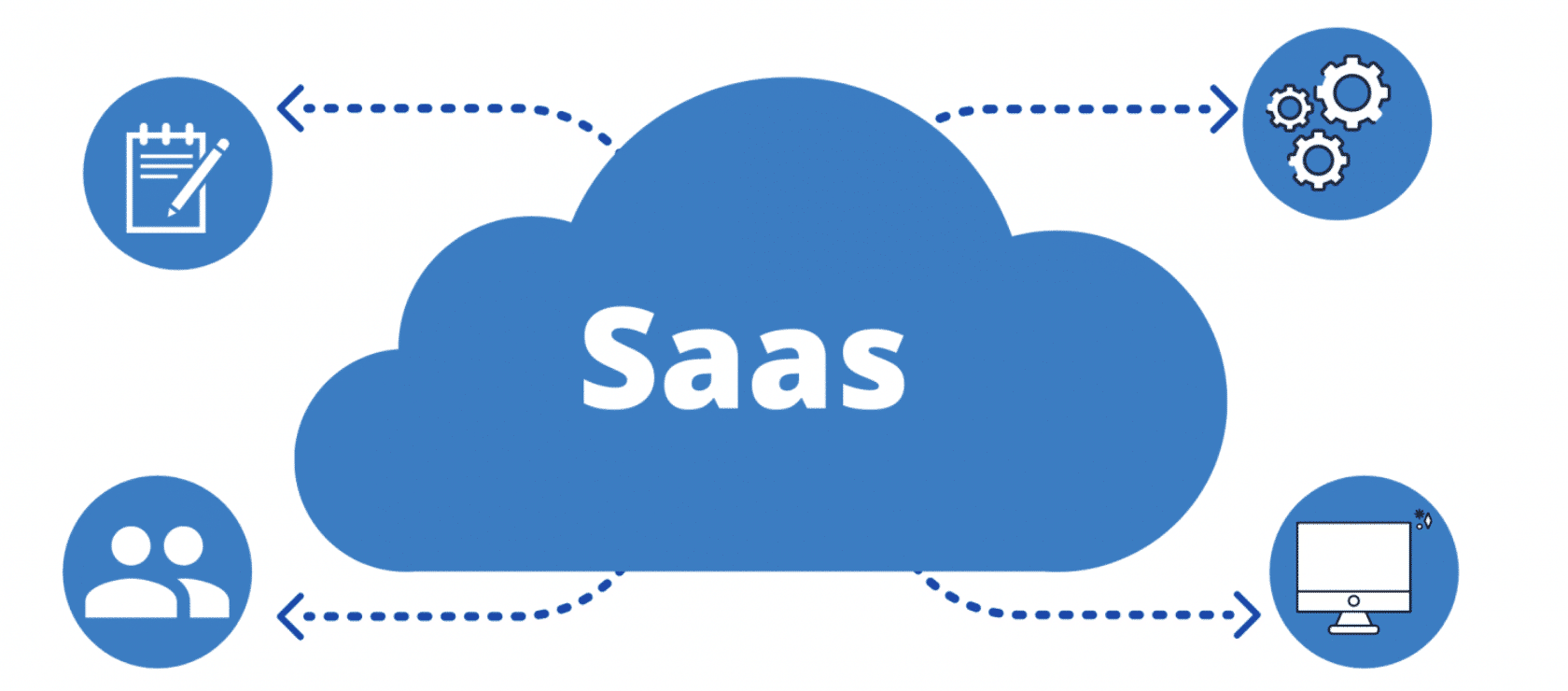
Image Source: ProofHub
On the flip side, since Horizontal SaaS is designed for a wide range of businesses, it may not fit your specific needs right out of the box. However, most Horizontal SaaS solutions are highly customizable, making it easy to adjust them to fit your workflows.
When it comes to effective integration, Horizontal SaaS takes the cake. These solutions are intended to work well with other tools and platforms, so you can usually integrate them with whatever other software your business is using.
3. Pricing
Vertical SaaS is the luxury car of the software industry. It comes with a higher price tag, but you’re paying for a product that’s tailored to your specific needs.
Horizontal SaaS is more like your reliable family sedan. It’s more affordable, but despite its versatility and features, it still may not offer the same depth of industry-functionality. In other words, it’s reliable and has all the basic features you need, but it’s not going to drive itself.
But, the price isn’t the only factor to consider. It’s also about value. Which option will give you the most bang for your buck? Which one will help your business run more efficiently, save time, and ultimately, save money?
4. Growth and Expansion Opportunities
The choice between Vertical SaaS vs. Horizontal SaaS isn’t just about growth and expansion opportunities—it’s about finding a solution that can support your business’s unique growth trajectory.

Image Source: Pay Pro Global
Vertical SaaS understands your business’s challenges, and is tailored to help your business thrive within its industry, leading to focused growth.
Horizontal SaaS is chock full of tools and features designed to support your business as it grows and evolves, even if that growth takes you to new areas or markets. Although Horizontal SaaS doesn’t offer industry-specific benefits, it does offer more flexibility.
5. Implementation and Adoption
Since Vertical SaaS already knows your workflows, it can make implementation and adoption a lot smoother. Your team might find it easier to get up to speed because the software speaks their language and fits into their existing routines.
Horizontal SaaS is versatile and adaptable, but it might require a bit more training. Because it’s designed for a wide range of industries, it might not understand your specific workflows or jargon right off the bat. This means your team might need a bit more time and training to get comfortable with it.
6. User Experience
The user experience can make or break any software, so it’s important to find a solution that your team can use effectively and efficiently, with a minimal learning curve. The good news is that both Vertical and Horizontal SaaS can be accessed on any device, making it easy for users to use the software on their preferred channels.
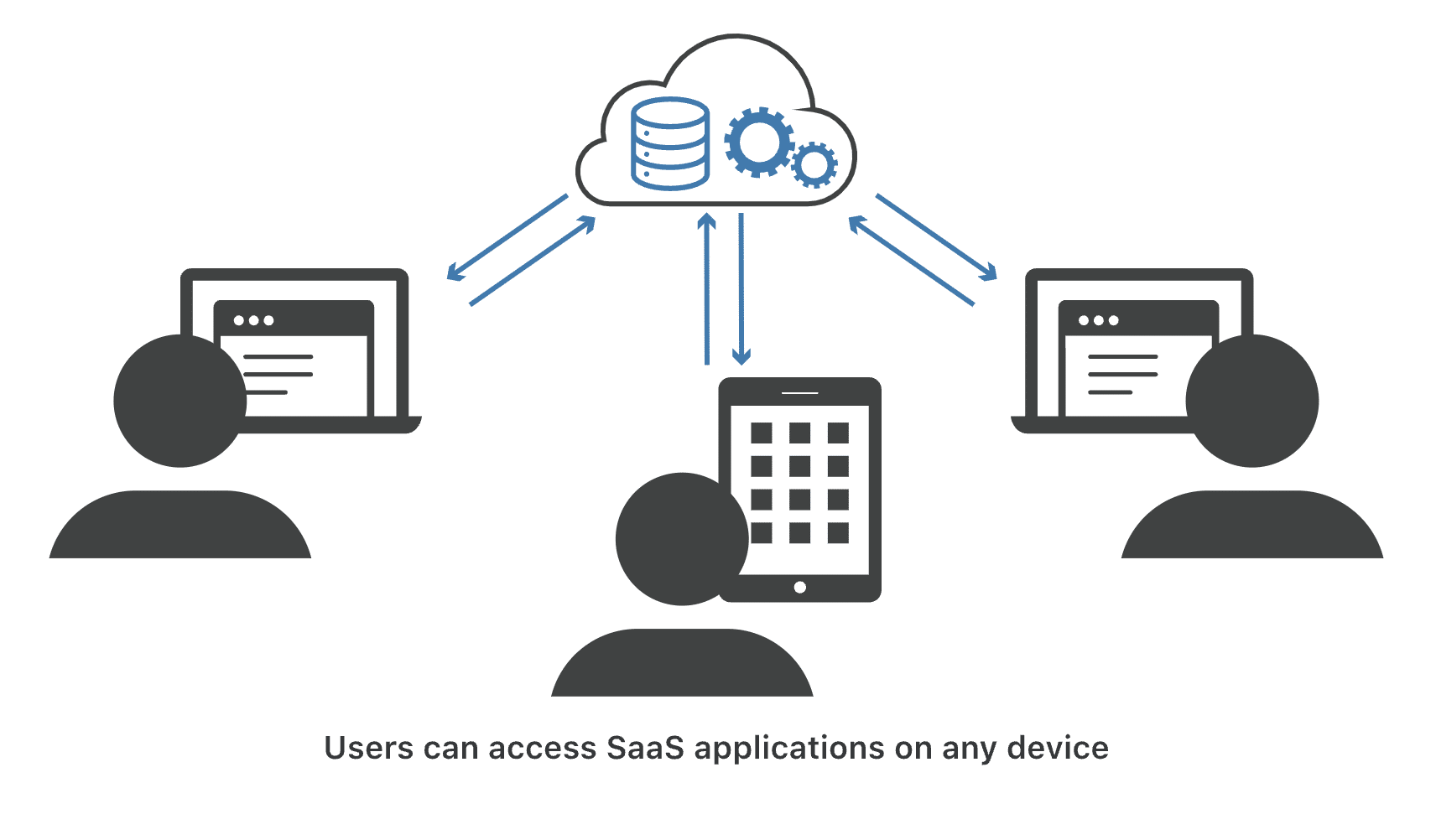
Image Source: Cloud Flare
When it comes to training and learning, choosing Vertical SaaS makes for a pretty smooth and intuitive user experience. Your team might find it easier to navigate and use because it’s built with them in mind.
On the other hand, Horizontal SaaS might not know all the shortcuts and smoothest routes for your specific industry. This means your team might need a bit more time to learn the ropes and get comfortable with it. But, Horizontal SaaS is designed with user-friendliness in mind, offering intuitive interfaces and helpful features that can enhance the user experience.
7. Scalability
Vertical SaaS will fit your needs right out of the box. But as you grow and your needs become more complex, you might start to feel a bit cramped. That’s not to say Vertical SaaS can’t scale—it absolutely can. But because it’s so specialized, it might not be able to accommodate growth and complexity as easily as its counterpart.
Horizontal SaaS is built with scalability in mind. As your business grows, Horizontal SaaS can grow with you. It’s versatile and packed with features, so it can accommodate increasing complexity and changing needs.
But remember, bigger isn’t always better. While Horizontal SaaS can scale easily, it might offer more than what you need, especially if you’re a smaller business or if your needs are very specific.
Vertical SaaS vs. Horizontal SaaS: Which One’s For You?
The choice between Vertical SaaS vs. Horizontal SaaS isn’t about which is better overall—it’s about which is better for you and your specific needs. So take the time to understand your business’s unique needs and challenges, consider your growth trajectory, and choose the SaaS solution that’s the best fit for you.
On the hunt for growth and expansion opportunities for your business? Marketing Insider Group has one for you. Sharing high quality content consistently is one of the most effective ways to generate more quality traffic and qualified leads. Get started today by checking out our weekly blog content service, or schedule a free consultation now to learn more!






